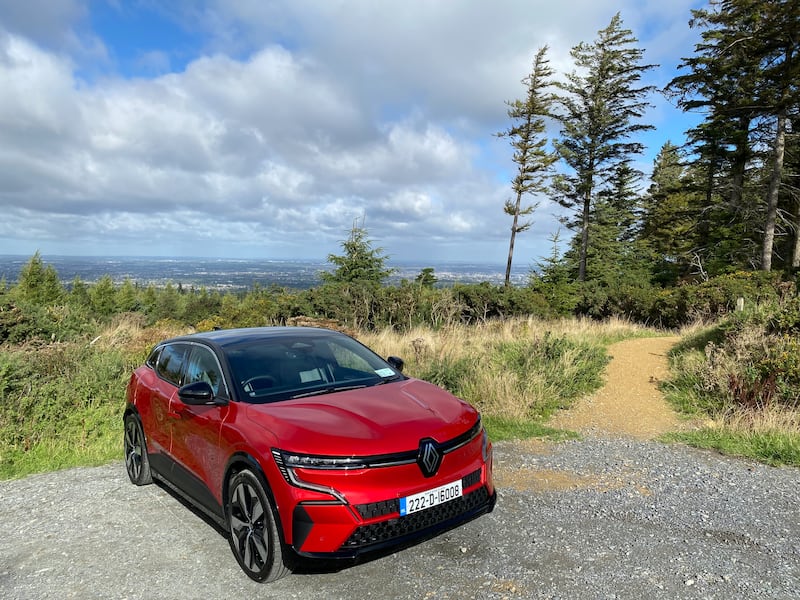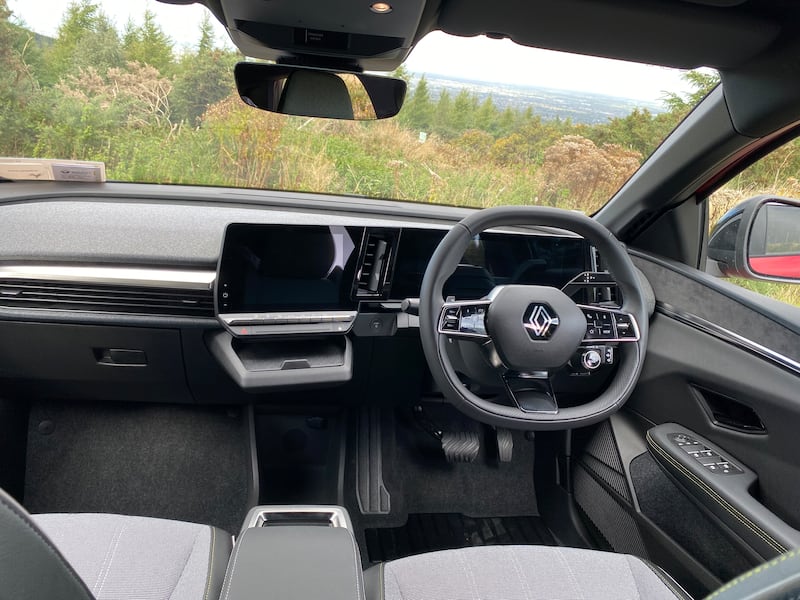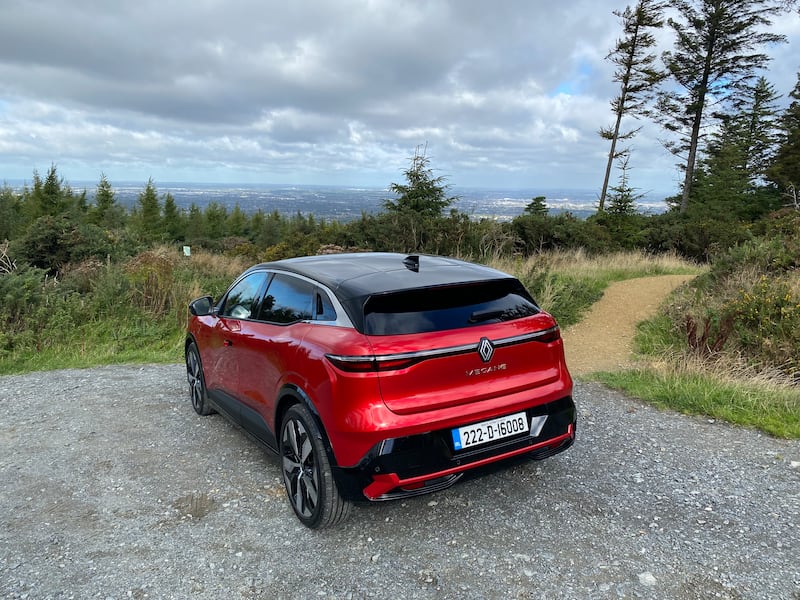It’s interesting, when you look back at Renault’s history, how often it has been on the cusp of being an almost-premium brand. Certainly, looking back at interviews I once edited of a troop of 1980s Irish celebrities, it was striking how many mentioned that they had switched to a Renault because it offered a bit more class, a bit more technological prowess, than an equivalent Ford or Opel.
In that, you’d have to sense a bit of a missed opportunity for Renault. The brand has often struggled to match the steady, upmarket rise of the likes of Volkswagen and even its great French rival, Peugeot. Too often, Renault has retreated to a stack-’em-high-sell-’em-cheap mentality, best (worst) exemplified by the savage discounts that put a lot of Fluence saloons (one of the most disappointing cars of all time) on to Irish driveways.
Happily, today, we seem to be at the other end of the pendulum swing. Renault for the most part these days, and in spite of having to shoulder a savage series of multibillion-euro losses in recent years, seems confident in its own corporate skin. It feels more like the Renault that gave us the 16, the original 5, the second-generation Megane than the Renault that gave us the 11 or the third-gen Megane.
This new Megane marks a seriously significant step, not least because it’s the first mainstream European family car to go entirely electric. Unlike rivals from Peugeot and Volkswagen, you won’t be able to buy a petrol or diesel or plug-in hybrid equivalent of this new electric Megane. You get a choice of 40kWh or 60kWh battery packs, and a choice of 130hp or 220hp electric motors, driving the front wheels.
Adolescence: Five truths about our teenage boys we need to address urgently
Her ‘no’ was clear. She did not want to go home with him. Still he went on. And on
The 100 best Irish books of the 21st century: No 25 to No 1
‘One of the lowest points of my life’: Elizabeth Day on marriage breakdown, IVF and How To Fail
The basic version has a 300km range, while the bigger-battery model has a claimed 450km range. That battery pack sits under the floor in the centre of the car, and can be charged at up to 130kW speeds from a high-speed public charging point. However, it’s not the fast-charging bit that’s impressive…
Prices start from €37,495 including all grants for a basic Equilibre 40kWh model, rising to €47,795 for the bells-and-whistles 60kWh Launch Edition. To be honest, you don’t need to spend that much at all. A basic Equilibre gives you all the equipment you need, and you can get one with the big battery for €41,995.

Style-wise, the Megane is one of Renault’s best recent efforts and praise comes no higher. The efforts of the likes of Gilles Vidal and Laurens van den Acker have lifted Renault’s styling up to a peak of performance of late, and the compact, muscular-looking Megane is one of the best-looking cars in its segment. The overall shape kinda suggests a crossover, but it’s actually quite low-slung and relatively sleek – indeed the roof is barely any higher off the ground than that of our own family Mini Clubman. It looks especially good in the “Flame Red” paint work of our test car (an €825 option).

Inside, the Megane has one of the best interiors in the business. It’s dominated by screens, of course, but they’re really good screens. Indeed, compared with the previous Megane or even current models such as the Captur or Clio, the new Megane represents a major leap forward in the layout and functionality of Renault’s digital tech. The software underpinning it all comes from Google, so you get integrated Google Maps, as well as wireless connections for Android Auto and Apple Car Play. Crucially, and thankfully, Renault has stuck with physical heating and ventilation controls, which just makes life so much easier.
In front of the driver, and behind a squared-off steering wheel that looks rather like that used by the BMW iX electric SUV (and which feels just as good to hold) there’s a big 12.3-inch digital instrument display, and that both looks great and works well. The full-map display is especially good, and there’s also a handy “dials” layout that shows the gap between you and the car in front, helping you to keep a safe distance.
[ Paris Motor Show: Renault’s 4 concept is the starOpens in new window ]
The only ergonomic Snafu is that the right-hand side of the steering column feels a little overloaded, what with the wiper control stalk, another stalk for the gear selector, and an extra pod for the stereo controls. Overall quality is excellent, aside from one or two cheap bits (especially the pound-shop start-stop button) and space is good too. The Megane actually feels like something of an anti-SUV inside, with a notably low-set roof giving a rather pleasantly intimate atmosphere, although there’s still plenty of legroom and headroom in the back. The boot is a very useful 440 litres, plus comes with a handy under-floor space for storing a charging cable, but there’s a very high loading lip if you’re trying to get anything big and heavy in there.
What’s it like to drive? Really good, with a caveat. The steering is light but quick-witted (you can stiffen it up a touch by selecting Sport mode from a Ferrari-style button hanging off the steering wheel) and the Megane’s nose reacts promptly to any movements. Front-end grip is strong, at first, but the Megane’s weight – even though it’s a relatively trim 1,600kg – does eventually tip you into understeer. You have to be pressing on a bit for this to happen, though. The ride comfort is mostly fine, but on the 20-inch wheels of our test car it could get occasionally a big “clonky” albeit always well-controlled. I suspect the basic model’s 18-inch wheels would give you a smoother ride.
The basic 18s are probably a good idea from another perspective – range. Renault claims a 450km range for this 60kWh battery on a full charge. Umm… nope. 350km is more like it, and 300km if you’re doing long drives up the motorway. That’s not terrible, but the Megane seems to lack the long legs of the likes of the VW ID.3 and the Cupra Born, both of which can pretty easily hit 400km in real-world conditions, not to mention the excellent Kia Niro and Hyundai Kona, both of which can do the same or better. The 20-inch wheels doubtless play their part in reducing that one-charge range, so as ever the best advice is go for the smaller alloys.

That could be disappointing, but the Megane has a trump card to play – how it charges. 130kW charging from a sufficiently powerful DC public charger is pretty decent, but that pales next to the fact that Renault fits the Megane, as standard, with 22kW AC charging – just as it does the smaller Zoe. That is a game changer for this size of EV, as it effectively makes every ESB e-Cars kerbside charger a quick (if not quite fast) charger. On one lengthy drive, we managed to add 30kWh of charge in just more than one hour, which is pretty much the charge time and waiting time you’d be looking at at a faster DC charger. It makes the Megane vastly more flexible on the still-too-sparse Irish public charging network than any rival, even those with a theoretically longer range.
It certainly feels like the EV sands are shifting a little. Renault feels as if it has brought back some of the pomp and confidence of the company that gave us the original Renault 16 – a car that set the template for the modern family car just as much as the more-lauded Fiat 128 and did it with more style.
It is a touch on the pricey side (especially compared with its distant relative, the Nissan Leaf, which isn’t much less capable in range terms), but it has a style and a sense of interior quality that will give the VW ID.3 a serious dose of the worries. Renault, like so many other carmakers, says that it wants to be a leader in the electric car world. On this evidence, that lead is there for the taking. Or at least it would have been had MG not just launched the impressive and €10,000 cheaper MG 4. Ah well, plus ça change and that’s your actual French…
Renault Megane E-Tech 220 60kWh Techno: the lowdown
- Power: 160kW electric motor developing 220hp and 300Nm of torque, driving an single-speed automatic transmission with front-wheel drive.
- CO2 emissions (annual motor tax): 0 g/km (€120).
- Electric consumption: 16.1kWh/100km.
- Battery capacity: 60kWh (net).
- 0-100km/h: 7.5sec.
- Price: €46,510 as tested, Megane starts from €37,495.














